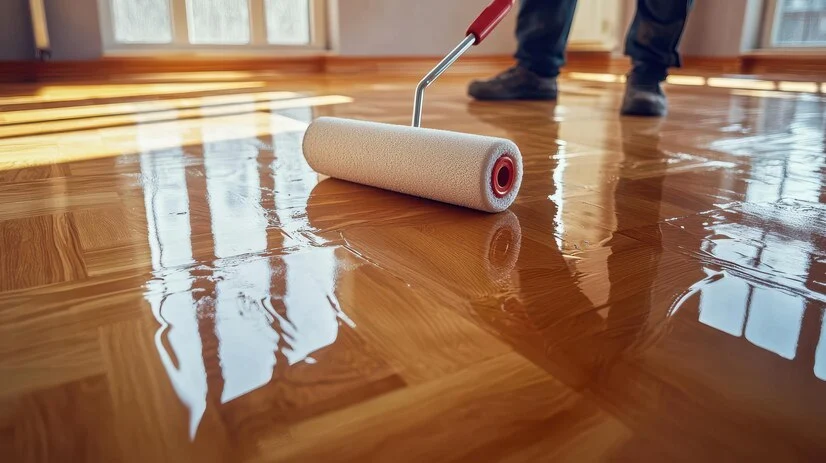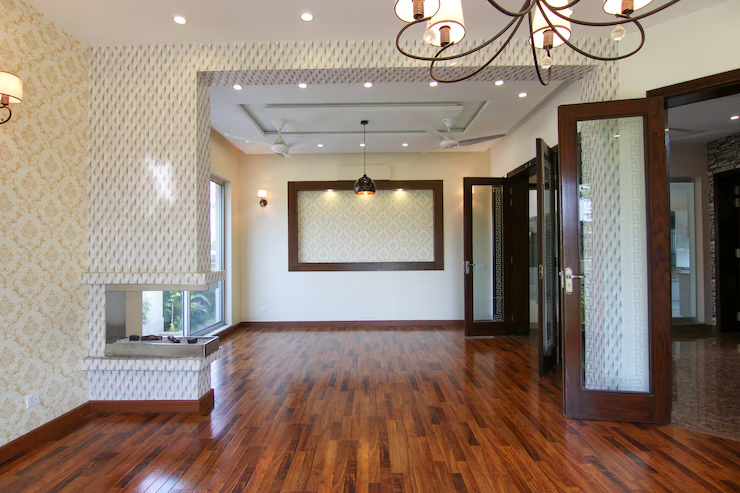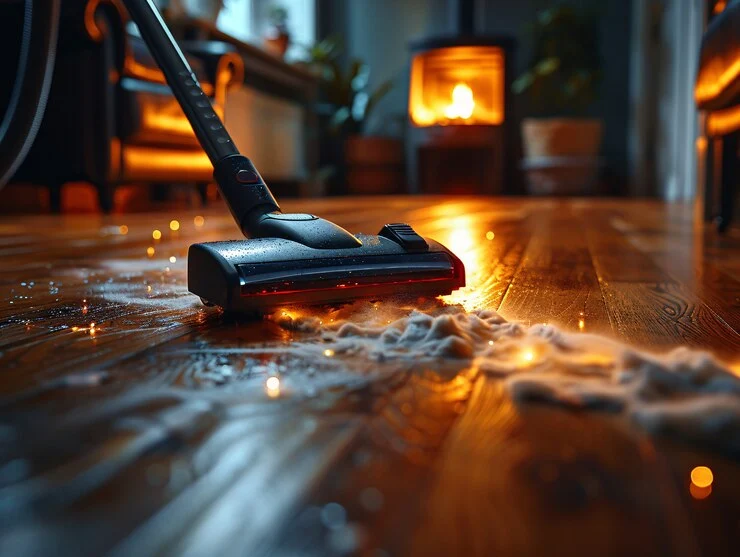When it comes to flooring options, luxury vinyl plank (LVP) flooring stands out as a top contender. Offering durability, ease of installation, and a wide range of design options, it is increasingly becoming a favorite for homeowners and businesses alike. In this comprehensive guide, we will explore everything you need to know about its—from its benefits to installation, maintenance, and comparisons with other types of flooring.
Introduction of LVP Flooring
Luxury vinyl plank (LVP) is a type of vinyl flooring that mimics the look of natural materials like hardwood, stone, and ceramic.The design of the planks mimics natural wood or stone, featuring realistic textures and patterns. LVP flooring combines multiple layers, including a tough wear layer on top, a high-definition image layer, a strong core, and a backing layer for added stability.
Key Features of LVP Flooring:
- Durable Wear Layer: Protects against scratches, stains, and fading.
- Water Resistance: Most LVP flooring options are 100% waterproof, making them ideal for kitchens, bathrooms, and basements.
- Realistic Look: Advanced printing technology gives LVP the realistic appearance of hardwood or stone.
- Affordability: LVP provides the luxurious look of natural wood or stone at a fraction of the price.
Advantages of LVP Flooring
Durability
One of the most significant benefits of LVP flooring is its durability. Thanks to its multi-layer construction, it is highly resistant to wear and tear. The tough wear layer makes it an excellent choice for high-traffic areas, such as living rooms, hallways, and commercial spaces. Unlike hardwood, which can be prone to scratches and dents, LVP can withstand heavy use while maintaining its appearance.
Waterproof Qualities
LVP flooring is not only resistant to water but is often completely waterproof. This makes it an ideal choice for areas prone to moisture, such as bathrooms, kitchens, basements, and even laundry rooms. LVP resists water damage without warping or staining, unlike natural hardwood, which can deteriorate from prolonged exposure to moisture.
Easy Installation
LVP flooring is relatively easy to install, even for DIY enthusiasts. Most LVP planks come with a click-lock system, which allows the pieces to snap together without the need for glue or nails.

You can lay this floating floor method over most existing subfloors, which reduces preparation time and costs.
Cost-Effective
For homeowners looking to achieve the aesthetic of natural wood or stone without the hefty price tag, it is an excellent alternative. It provides a high-end appearance at a fraction of the cost, making it a popular choice for budget-conscious remodelers.
Low Maintenance
Unlike hardwood floors, which require regular sealing and polishing, it is low-maintenance. Simple cleaning with a broom or mop is often enough to keep the floor looking pristine. It’s also resistant to stains, so spills can be easily wiped away without leaving lasting damage.
Types of LVP Flooring
Rigid Core LVP
Rigid core LVP is a type of luxury vinyl plank that has a denser, more stable core. This makes the flooring more resistant to impacts and less likely to dent. It’s ideal for high-traffic areas or spaces where furniture might be moved around frequently.
Flexible Core LVP
Flexible core LVP is thinner and more pliable than rigid core varieties. While it offers the same visual appeal and water resistance, it may not be as durable in high-traffic settings. However, it can be an affordable option for rooms with less foot traffic.
WPC (Wood Plastic Composite) LVP
WPC LVP features a wood-plastic composite core, which makes it thicker and more cushioned compared to other types of LVP flooring. This type offers additional comfort underfoot and enhanced sound absorption, which makes it popular in multi-level homes or apartments.
SPC (Stone Plastic Composite) LVP
SPC LVP has a stone-plastic composite core, which provides superior durability and stability. This type of flooring is less prone to expansion and contraction, making it ideal for areas with fluctuating temperatures or humidity levels.
Comparing LVP to Other Flooring Options

LVP vs. Hardwood
Although both LVP flooring and hardwood offer a beautiful, natural look, they differ in several key ways. Hardwood, for instance, is more expensive and demands more maintenance compared to LVP. However, real wood can add greater long-term value to a home. In contrast, LVP not only provides superior water resistance but also withstands damage more effectively than other flooring options.
LVP vs. Laminate
LVP and laminate flooring are often compared due to their similar appearance. However, LVP has a significant advantage over laminate because it is waterproof, while most laminates are only water-resistant. Additionally, LVP is softer underfoot and more durable in high-moisture environments.
LVP vs. Tile
Tile is a durable and water-resistant flooring option, but it is often more expensive and difficult to install than LVP flooring. LVP offers a softer surface and is easier to replace if damage occurs. Additionally, LVP can mimic the appearance of tile while providing more comfort underfoot.
Installation Process of LVP Flooring
One of the primary reasons people choose LVP flooring is its ease of installation. Many varieties use a floating floor system, which means the planks click together without the need for nails, glue, or staples. This makes it a perfect option for DIY installation.
Step-by-Step Installation:
- Preparation: Begin by ensuring the subfloor is clean, dry, and level. LVP can be installed over concrete, plywood, or existing flooring.
- Acclimatization: Allow the LVP planks to sit in the installation room for 48 hours to acclimate to the room’s temperature and humidity.
- Layout: Measure the room and plan the layout of the planks. Start along one wall and work your way across the room.
- Install the Planks: Use the click-lock system to connect the planks, ensuring they are snugly fit together.
- Finishing Touches: Install baseboards or moldings to give the floor a polished appearance.
Maintaining and Cleaning LVP Flooring
LVP flooring is known for its low-maintenance qualities, but that doesn’t mean it’s maintenance-free. Regular sweeping or vacuuming will help keep dirt and debris from scratching the surface. Spills should be cleaned up promptly to prevent stains. A damp mop with a mild cleaner can be used for more thorough cleaning.

Tips for Maintaining LVP Flooring:
- Use furniture pads to prevent scratches.
- Avoid abrasive cleaning products.
- Wipe up spills quickly to avoid any long-term staining.
Conclusion
Luxury vinyl plank (LVP) flooring is an excellent option for homeowners and businesses looking for a durable, water-resistant, and aesthetically pleasing flooring solution. Whether you’re upgrading your living room, kitchen, or bathroom, it offers the look of natural materials without the high cost or maintenance. With its easy installation, a wide variety of styles, and long-lasting durability, LVP continues to be a top choice for modern flooring.





Leave a Reply